
By Chris Greene and Tim Frank
The common practice of colocating fire alarm panels in electrical rooms of low- and mid-rise apartment buildings poses unique challenges to our members during fire conditions. Colocating the fire alarm panel has many advantages for the building owners (photo 1), such as the following:
- The electrical room has fire-rated walls and doors, generally one-hour minimum.
- The rooms are often located in utility spaces, such as a garage or a basement.
- The fire alarm panel is near the building’s incoming power, so less wiring is needed, and it is secure.
- The fire alarm panel is behind a secured door that is inaccessible to the public.
However, for these types of buildings, a fire involving the electrical room will render the fire alarm panel inaccessible to the on-scene fire department members and may complicate the fire attack.
In newer and larger occupancies, there is often a separate space designed for electrical infrastructure and other equipment that shares a common separation wall with the building’s electrical room, such as an electrical utility vault space. The building owner or maintenance personnel cannot access these utility spaces; the local utility company must unlock them. If present, they will magnify the hazards responders face in fire conditions. Unknowingly forcing electrical utility doors and entering an electrical vault space place firefighters in close proximity to high-voltage feeder lines and other energized equipment. In photos 2 and 3, what seems to be only a fire alarm panel room is also the electrical vault. In photo 4, the door to this room was labeled just “Fire Alarm Panel,” which is at the right; the electrical meter bank is at the left. Often, there is no label to indicate that the room may have a serious electrical hazard. Rookie firefighters encountering locked doors that are emitting smoke will often have “blinders on,” may not notice any placarding, and will force the door and begin to flow water on the fire problem without fully evaluating the fire area. Complicating this issue, the door placarding of these spaces is generally at the eye level of a standing human; if the door was opened during an earlier investigation/maintenance purpose or if a significant smoke condition exists, this placarding may be overlooked or not be visible (photo 5). Fire attack supervision and a risk/benefit analysis will be paramount to ensure firefighter safety.

(1) Photos by Chris Greene.
Dispatching Issues
Dispatching for these incidents will depend on how the fire dispatch center receives the information. If the call is received from a fire alarm-monitoring company, the information available will be based solely on the type of detection device installed in the electrical room (which contains the fire alarm panel)—most likely, a single-heat detector. Although it is better than nothing, these devices are notoriously slow to activate and are rarely supported by smoke detectors or fast-action sprinkler heads. Hence, the first-due company may encounter a well-involved fire in an extremely hazardous environment.
In a verbal report of smoke through a 911 call, the information will be limited to what the caller is able to report. Since the caller generally does not have access to the secured space, the information may be limited to a generalized report of smoke in the building. Also, because the electrical room is generally not near the living units, recognizing the fire condition may be significantly delayed.
It will be uncommon to have extinguishment capability in the electrical room, and the fire codes for older buildings often allowed “local” alarms or pull stations that trigger local bells intended only for the occupants. These are not monitored by an alarm-monitoring company that would call local 911 fire dispatchers. In these instances, there can be a significant delay in the dispatching of fire department units to the scene.
Newer buildings have an annunciator panel in the building’s lobby. This is extremely beneficial and may be the first indication that the fire area is in the electrical room (photo 6). Older buildings, however, may lack an annunciator panel, and the member who travels to the alarm panel room to investigate the alarm’s cause or to silence the bells may be the first to find the fire.
Fire in Electrical Room Clues
The following are some key indicators of a fire that may involve the electrical room and the need to use extreme caution:
- A power outage associated with the building in alarm.
- The annunciator panel indicates alarm activation in the fire alarm control room.
- Signs of smoke or fire coming from a room identified as “Fire Panel,” “Fire Control Room.”
- “High Voltage” or other electrical placarding is on the locked doors of the fire room.
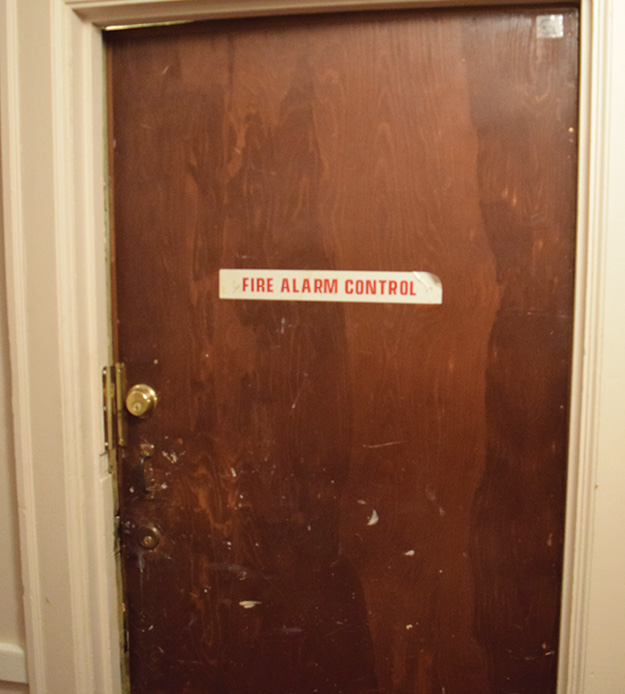
Actions to Take
With a confirmed electrical room fire, you must take the following actions concurrently, not alone, to ensure public and firefighter safety.
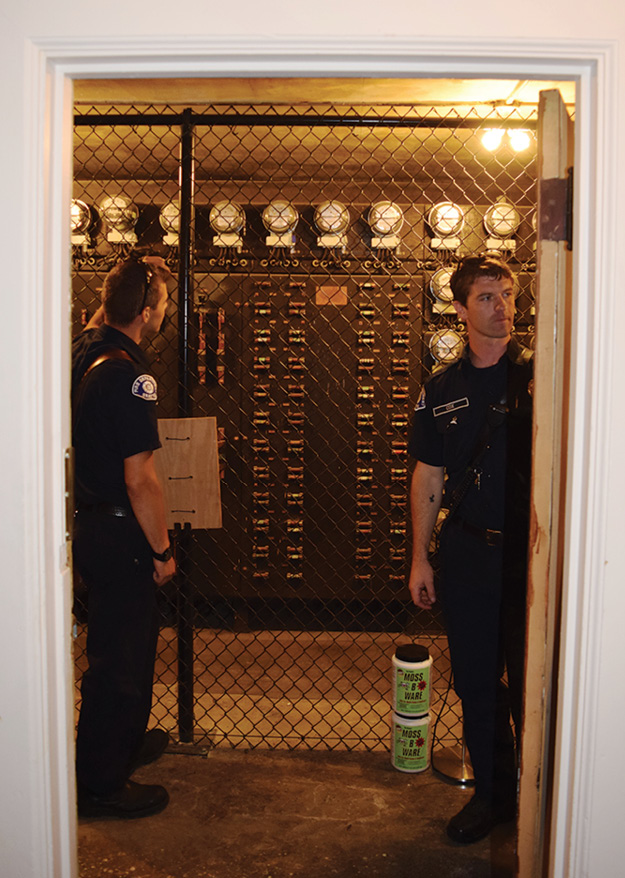
- On the tactical radio frequency, report the following: Confirm there is a fire in the building’s electrical space, identify the space’s location, describe the smoke/fire conditions, identify the exposures, request needed resources, and report your intended tactics.
- Notify the utility company that there is a fire in the electrical space and request its immediate assistance. Utilities’ response time can vary, so be prepared should it be delayed.
- Evacuate occupants, and perform a good primary/secondary search.
- Place hoselines to ensure that the fire does not extend beyond the room of origin.
- Do not access this space to attempt extinguishing this fire using water. Note: Firefighting foam will more than double the conductivity of a hose stream.
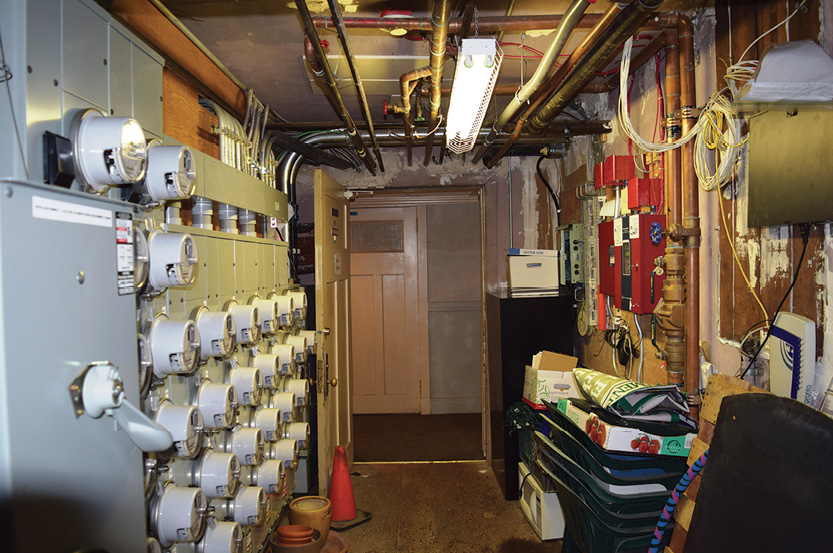
Risk/Benefit Considerations
If you choose to take offensive action to extinguish a fire in an electrical space, consider the following:
- The door or door frame may be energized. Doors to electrical rooms are often metal doors in metal frames. Depending on the cause of the fire, it is possible there is a current path to the door. Check for stray voltage using a direct contact electrical voltage detector. If this door gives you a positive electrical read, reconsider accessing this space and adjust your risk/benefit analysis.
- Expect a ventilation-limited fire condition. These spaces are generally small and relatively nonvented, so they can present the perfect setting for a smoke explosion when you open the steel door.
- Expect a possible arc fault explosion. Anticipate arc faulting, and understand that your structural firefighting gear offers limited thermal blast protection. Distance and shielding are the only things that will ensure your safety if an arc fault explosion occurs.
- Use a nonconductive extinguishing agent. Carbon dioxide (CO2) is a good extinguishment option and may be applied indirectly from a partially open door. However, ensure that you understand this extinguishing agent’s capabilities and proper use. The typical 20-pound CO2 extinguisher is good for only about 180 cubic feet (ft3) of extinguishment to ensure saturation of the product in an enclosed area [National Fire Protection Association 12, Standard on Carbon Dioxide Extinguishing Systems (2015 ed.) recommendation]. In short, you will need several extinguishers for this indirect approach and will need to fill the entire room to saturation to be effective. For sufficient CO2 saturation to extinguish an electrical hazard fire, allow one pound of CO2 per 9 ft3. Therefore, to extinguish a fire in a 10- × 10- × 8-foot room, you’ll need a minimum of five 20-lb. CO2 extinguishers. This is an all-or-nothing approach, and you must accomplish it as quickly as possible. Once you start the flow of CO2, it must be continuous; the next extinguisher must be present and ready to flow when the previous extinguisher has been exhausted until all have been emptied into the space as quickly as possible.
- Fuel loads “should” be minimal. Ideally, an electrical room’s fuel load should be low. However, despite fire code language that prohibits this, these spaces often double as building storage spaces. Without a strong fire inspection program and enforcement, electrical spaces often become filled with combustible material and other hazardous storage.
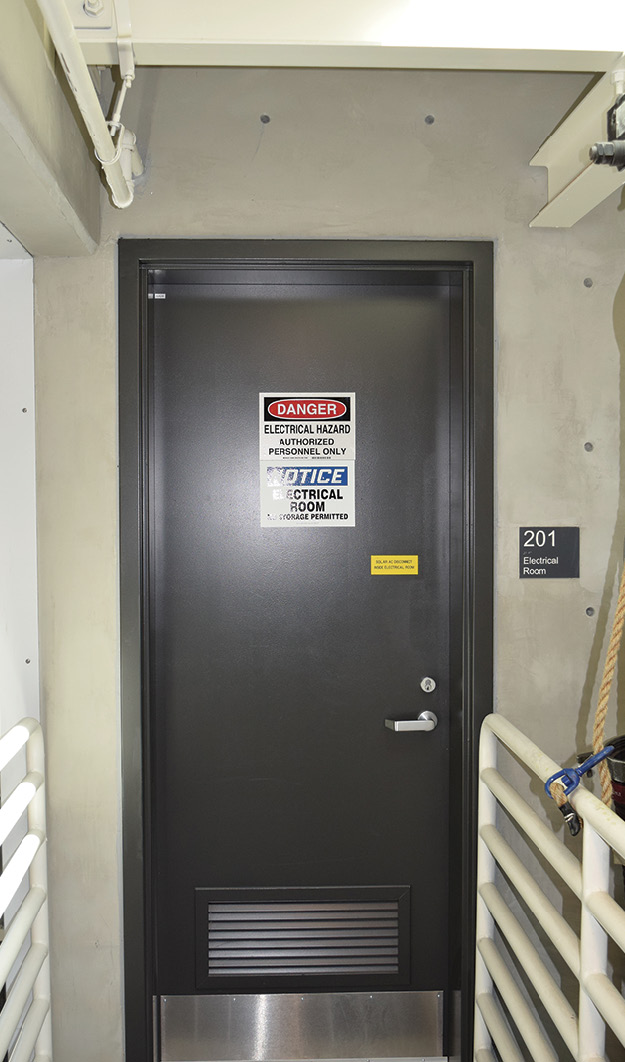
Taking offensive firefighting action in an electrical room fire of a low-/mid-rise apartment building is very hazardous before you have confirmed that the building’s electricity has been shut off. Without technical knowledge, hazard-specific training, and hazard-specific tools, it is not recommended. However, prepare for every contingency and every option. Understanding electrical hazards and the available mitigation tactics of the hazards, no matter how uncommon they may be, is part of being a professional emergency responder and a professional agency.
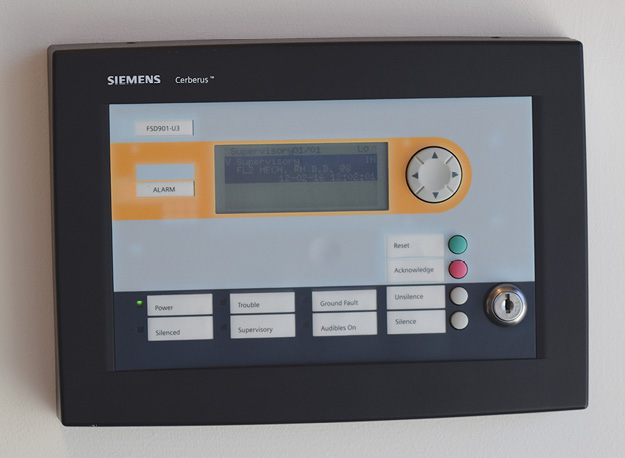
Fires involving electrical spaces will always provide unique challenges. A good prefire inspection program goes a long way in preparing for this situation. The key is understanding this hazard, recognizing the signs early, and knowing your limitations and those of your crew and your equipment. Work directly with your area’s electrical energy provider and develop a dialogue regarding your and its expectations of interaction at a fire scene. This dialogue will lead to a better understanding of the hazards and will highlight your department’s capabilities and limitations relative to electrical room fires.
CHRIS GREENE is a 21-year veteran of and a captain with the Seattle (WA) Fire Department (SFD), assigned to Engine Company 25, which is part of the Vault Fire Response Group (VFRG). He created the VFRG within the SFD while working closely with Seattle City Light personnel to identify hazard gaps in fire department equipment and response strategies/tactics for electrical emergencies.
TIM FRANK is an 18-year veteran of and a lieutenant with the Seattle (WA) Fire Department, assigned to Ladder Company 10, which is part of the Vault Fire Response Group stationed in the Capitol Hill neighborhood. He also serves as a search manager for the Washington State FEMA Urban Search and Rescue Task Force 1.
Related training:
http://emberly.fireengineering.com/articles/2010/08/cc-fire-alarm-control.html
http://emberly.fireengineering.com/articles/2011/04/fire-alarm-backup-power.html

